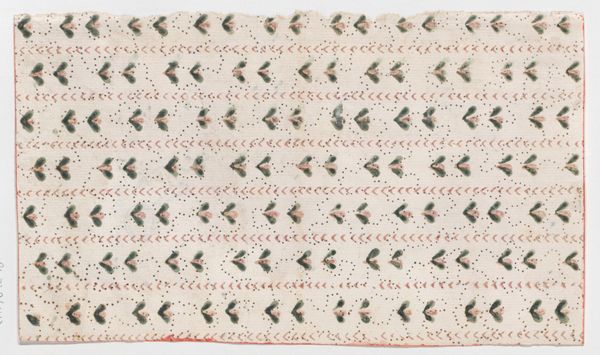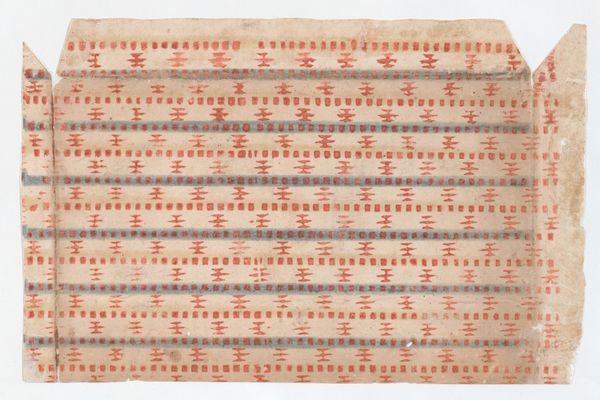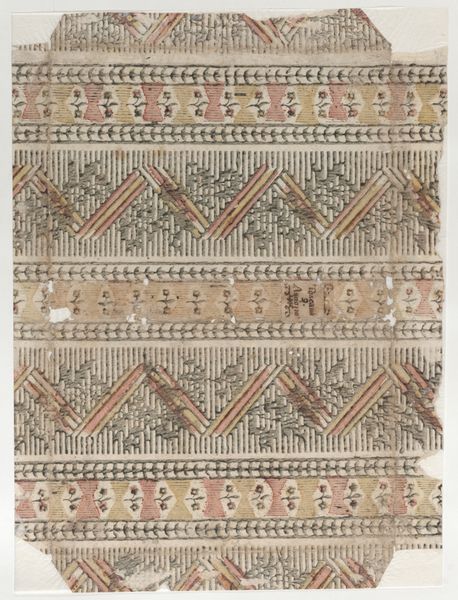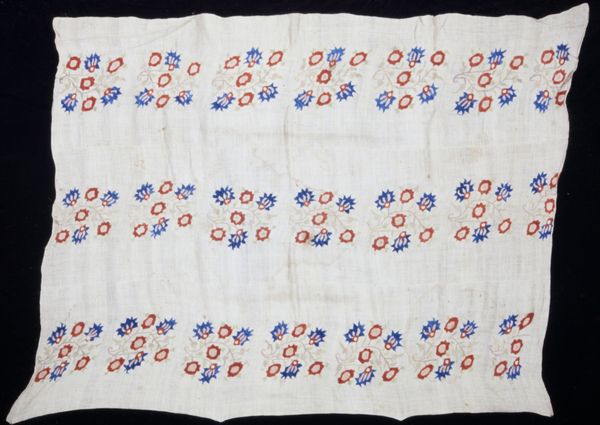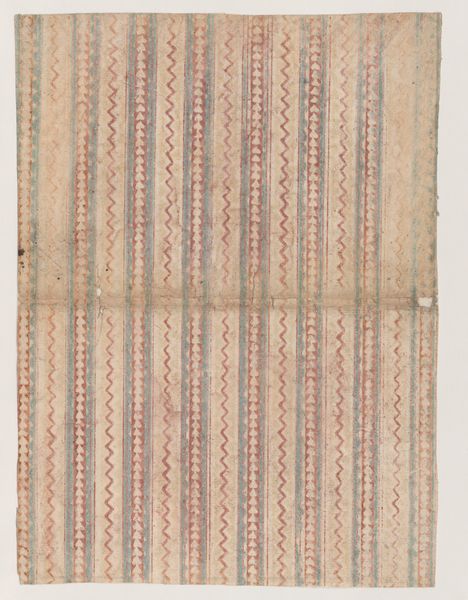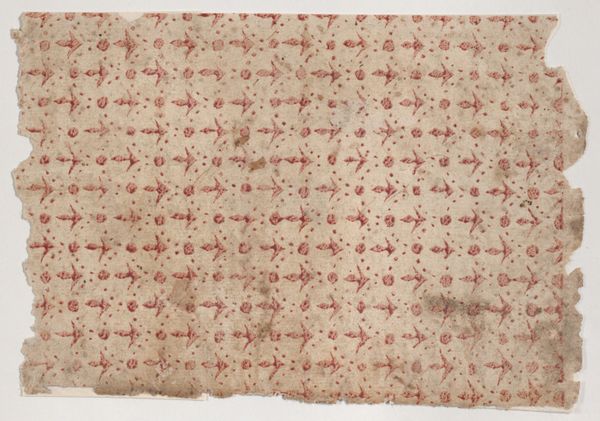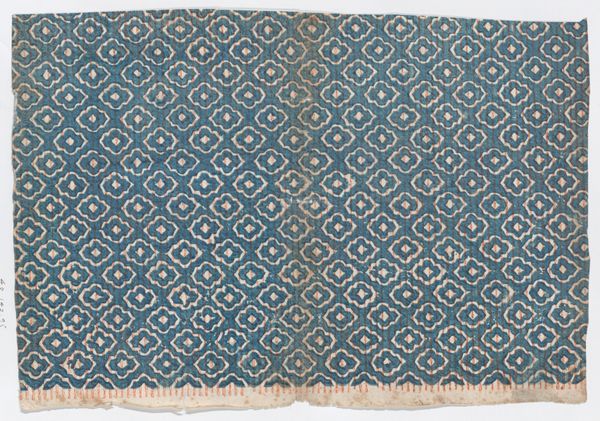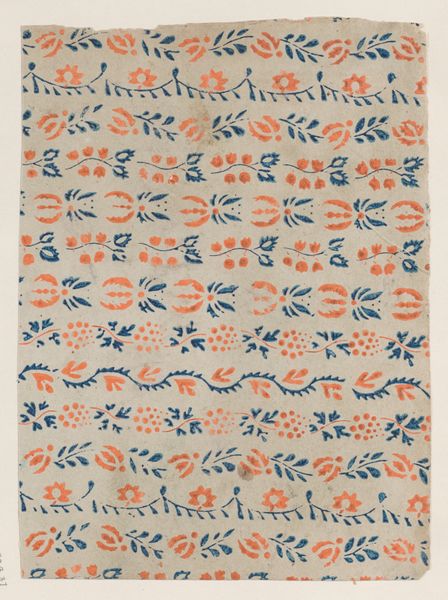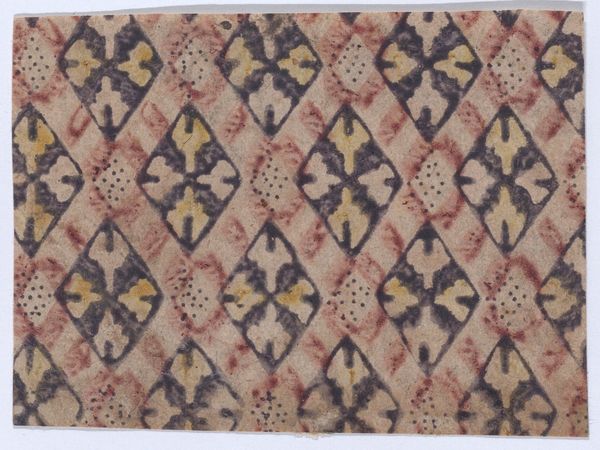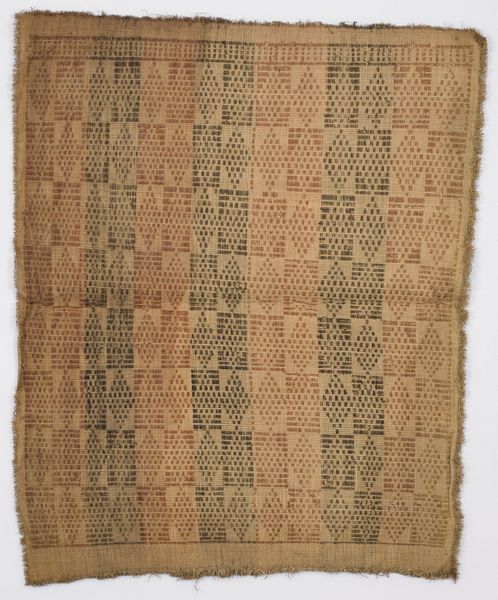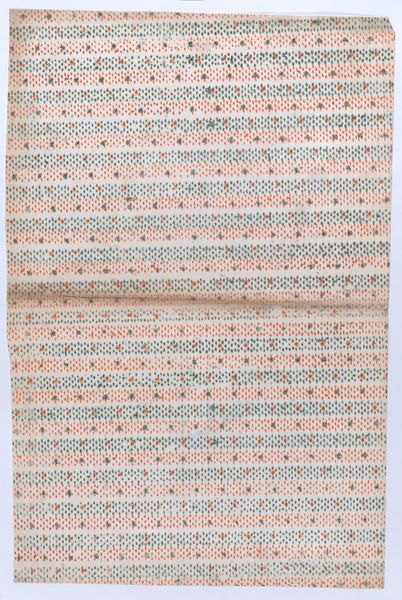
drawing, print, textile, paper
#
drawing
# print
#
pattern
#
textile
#
paper
#
decorative-art
Dimensions: Sheet: 6 15/16 × 9 11/16 in. (17.7 × 24.6 cm)
Copyright: Public Domain
Editor: Here we have a book cover with an overall floral pattern, likely made sometime in the 1800s. It looks like it’s made with drawing and print techniques, maybe even a textile applied to paper. I find the repetitive pattern almost hypnotic. How do you interpret this work? Curator: It’s interesting how a seemingly simple floral pattern can be so compelling. We must ask, whose stories are obscured by the seemingly innocent, repetitive imagery? What were the working conditions like for those producing these patterns, and how were these laborers devalued to produce a simple item? Editor: So, you are thinking about labor practices? Curator: Exactly! The decorative arts, textiles, and even bookbinding were all too often exploitative industries. Consider the societal values reflected in mass produced objects. Consumption during this period was intrinsically connected with colonization and a growing disparity between the powerful and powerless, which we must remember to question. What are your thoughts on how it’s aged and worn? Editor: It seems really delicate and fragile, so very distant from those complex socio-political issues. But the damage makes the design unique; each tear or stain acts as a counterpoint to the relentless pattern. Curator: Indeed. The degradation actually helps bridge the gap between its historical context and our contemporary concerns. It invites a deeper consideration of not just what we consume, but how we consume it, then and now. Editor: I hadn't considered how the repetitive nature of the design mirrors the repetitive nature of production and consumption. Curator: Precisely. And, as we reflect on these older forms, how can we make sure history doesn’t repeat itself when it comes to modern industries?
Comments
No comments
Be the first to comment and join the conversation on the ultimate creative platform.
